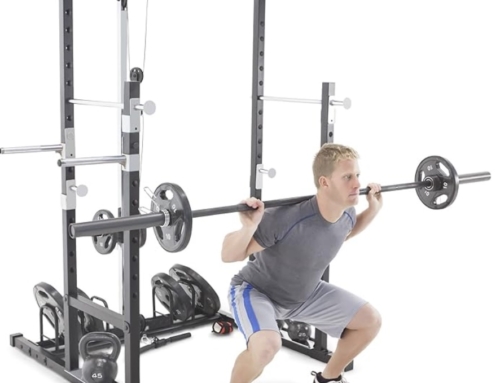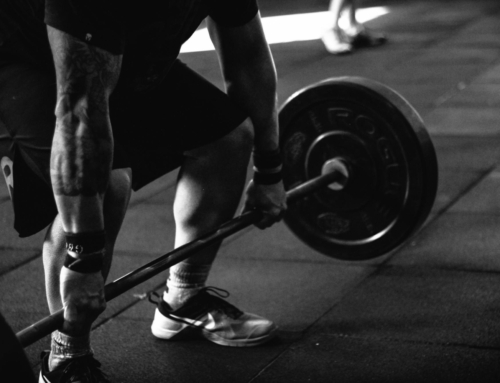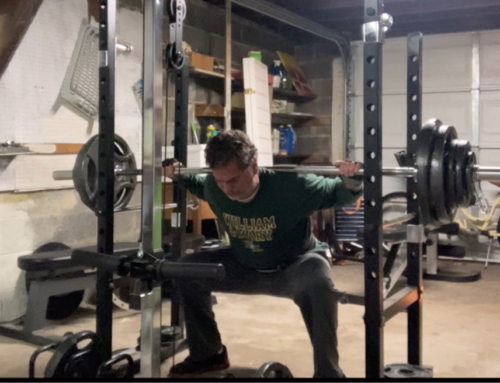I recently read that through the use of accelerometry analysis, it was estimated that less than 10% of the US population meets the 150 minutes of moderate intensity physical activity per week prescription recommended by the CDC.
Some argue that the 10% figure is overly pessimistic, as there is another estimate as high as 47%. I am guessing the real answer is somewhere in between that range.
With that said, given the high level of obesity in this country, it is clear that more people need to be more active.
Moderate intensity physical activity is activity that results in an elevated heart rate, probably in the range of 110 beats per minute.
150 minutes is five sessions of 30 minutes per week.
A brisk walk will get you into the 110 range.
Quite honestly, this amount of activity is very modest, but it provides significant benefit.
The following discussion is from my Barbell Logic training. I highly recommend you check them out.
In the chart from the NIH Physical Activity Guidelines, we can see that the hazard ratio for 20 MET-hours of activity a week is ~0.61—meaning that, on average (in a large group of people), those who get 20 MET-hours of intentional physical activity per week are 39% less likely to die any given year than those who get none.
This remains approximately true throughout a lifetime, so 40-year-olds will still have lower mortality than 80-year-olds, but the active middle-ager will have about the same better-odds compared to their sedentary peers.
According to AI, a MET hour is a measure of the energy cost of an activity.
Health and fitness studies often bracket cohort activity levels in MET⋅hours/week, which helps to quantify and compare the amount of physical activity people engage in.
If you walk briskly for 30 minutes, which is a 4 MET activity, you would have accumulated 2 MET-hours (4 METs x 0.5 hours).
Back to the chart above, you can see that you get the most benefit just by doing something, which is basically getting in about 10 MET hours per week.
Beyond, that, the benefits begin to level off a bit.
In terms of cardiovascular health and mortality, virtually every study shows that complete inactivity is massively harmful, any activity is good, and unless you are already putting in 10+ hours of moderate-intensity endurance training a week, more is better.
Although mortality is an important endpoint, it’s certainly not the only one. What kinds of deaths are being prevented, and does activity improve the rate of non-fatal diseases that can still worsen our quality of life?
Diabetes
There is clear evidence that activity meeting or exceeding the NIH guidelines helps in the management of both Type 1 and Type 2 diabetes.
With Type 1 diabetes, cellular glucose receptors open to receive sugar from the bloodstream independent of insulin.
This has led to an entire body of research on how to use activity and food together to increase a Type 1 diabetic’s “time in range” (the amount of time in the day they spend in a normal blood glucose range) with fewer insulin injections.
Team Novo Nordisk a professional cycling team composed of Type 1 diabetics is pushing the limits of this research and publishing their work in the hopes of discovering more general insights that can be useful for all diabetics.
Type 2 diabetics see an improvement in glucose control, insulin sensitivity, blood pressure, and many other metrics.
Heart Disease
Exercise appears to improve almost every measure of heart disease, from blood pressure to Apob, and reduce the likelihood of future cardiac events.
Some evidence suggests that those who have one or more risk factors for heart disease show more benefit than those who don’t, but that’s something of a moot point in the United States, given that only 12.2% of American adults are “metabolically healthy” on all five measures of cardiovascular risk:
- Waist circumference (WC <102/88 cm for men/women)
- Glucose (fasting glucose <100 mg/dL and hemoglobin A1c <5.7%)
- Blood pressure (systolic <120 and diastolic <80 mmHg)
- Triglycerides (<150 mg/dL) and high-density lipoprotein cholesterol (≥40/50 mg/dL for men/women)
- Not taking any related medication
Frailty and Sarcopenia
Although resistance training is our primary tool for retaining and even building muscle mass as we age, those who meet or exceed activity guidelines also have a reduced frailty risk and more muscle mass than their sedentary peers.
Although cardio has developed a reputation as sapping muscle mass or leading lifters to be too skinny—compared to inactivity, it’s decidedly anabolic.
The clearest example of this came from a 2014 study of 12 previously-sedentary subjects.
After a year of training ramping up to a marathon-level effort (peaking at 7-9 hours of training per week), the subjects, on average, kept the same weight while gaining six pounds of lean mass.
Inactivity Is Illness
Exercise has positive effects on virtually every known chronic condition: stroke, multiple sclerosis, osteoporosis, obesity, mental health, addiction, and more.
However, greater activity is rarely a cure for any of these conditions, instead contributing to improvement and better management as part of a broader practice and treatment.
The broad-ranging positive impacts of activity with sharp diminishing returns have led some researchers to suggest a different mental model: Rather than regarding exercise as a medicine, they think of inactivity as a systemic illness or toxin that damages the body.
For this reason, it’s not necessary to push active people to do even more.
Instead, it’s a good idea to first get people up and moving and then increase the activity if it improves their quality of life.
Final thoughts
Exercise is still the best medicine, and I regard strength training to be the best exercise medicine of all.
With that said, not enough people are active enough each week, and that needs to be the first step.
Walking is a great place to start, and if you can handle that, then look into strength training to build muscle mass.
If you don’t want to train at a gym, and don’t have much space at home, get yourself a pair of adjustable dumbbells. These are a versatile tool for helping you build strength and muscle.
Now, get to work!
Discover more from Scott Allan Cole
Subscribe to get the latest posts sent to your email.







Leave A Comment